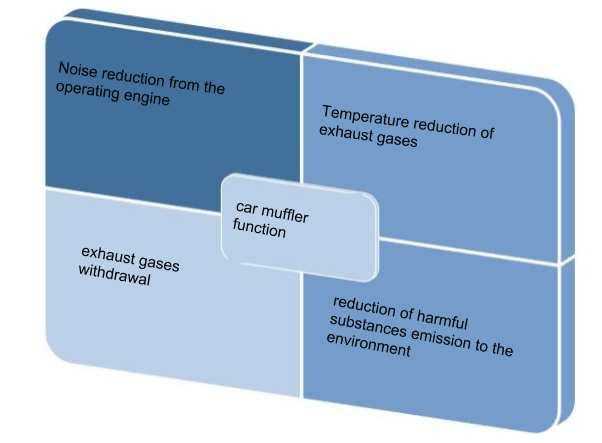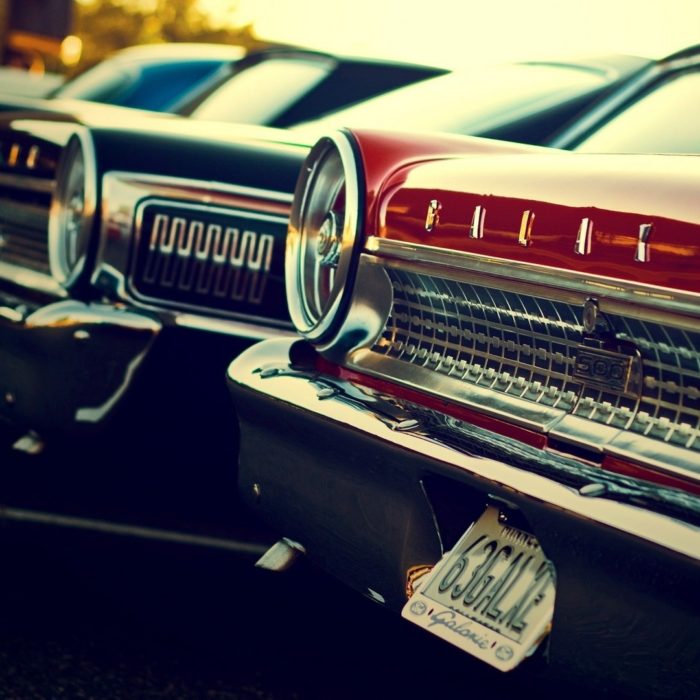At first, mufflers were used solely for getting rid of exhaust gases that accumulate in the system. Later they contributed to noise reduction. A modern muffler is a real piece of art. This impacts not only the way the engine works but also acts as a vibrant touch in car design.
The function of the muffler
The main function of the car muffler is to decelerate the motion speed of exhaust gases. This helps to smooth strokes when the engine works. There are no precise standards for the inner construction. Thus, every manufacturer tries to find its own unique ways that will help to advantage ahead of any competitor.
Initially car mufflers had few functions and were believed to play only supplementary role. However, as time passed, exhaust systems were to play a more significant role. Today thanks to mufflers we manage to significantly decrease the noise level from the engine in operation, reduce the temperature of exhaust gases, withdraw exhaust gases out of the car as well as decrease emission of harmful substances to the environment:

Features of car mufflers design
There are lots of different types of car muffler design. Thus, the factors that really matter here are:
- car brand;
- engine capacity;
- manufacturer;
- model.
Luckily, despite such a great variety the interior of car mufflers looks almost the same. It consists of baffles, perforated nipples and heat-resistant wadding.
At large, the exhaust system consists of a collector (down pipe), catalyst (converter), front muffler (resonator, flame damper), middle tube and rear muffler. The front mufflers divide into active and reaction-propelled. Apart from common mufflers there are also straight mufflers.

Load increase makes engineers increase the size of a car muffler. The same is about the inner structure. Each construction is a collection of pipes and tubes. However, its key function is to make the best use of the capacity.
Thanks to a countless number of holes in pipes the exhaust gases quickly dissipate in the capacity of car muffler structure. Whereas, the function of the tubes is to send them back. This helps to smoothen flow distortion.
In mass production of car mufflers we use:
- Plain (black) steel.
- Stainless steel.
- Aluminized steel.
- Zincalume steel.
Due to constant development of car industry there appeared a new generation of mufflers which help to significantly increase engine efficiency. The structure of car mufflers has always been modified though the working principles and the structure itself remain the same over the last decades. Today it is not just a plain metal “can” but a full-fledged system that provides proper engine operation.
The history of the world’s 1st car muffler
Thanks to a French company of Panhard-Levassor the world has seen the first car muffler (sound filter) that helped to “soothe” the combustion engine and gave a petrol motor a second life. The aforementioned company produced cars for sale and was the first to fit the cars with sound filters as far back as in 1894. However, there is a version that in 1897 Milton Reeves, a father of six- and eight-wheeled vehicles, started to use the mufflers.

Many people believe that Elle Dolores Jones designed the first muffler in 1917.
Evolution of exhaust system
First flawed mufflers took a good part of power from low-power motors. In order to preserve at least some dynamics the engineers made a special valve which allows to deflate the exhaust directly. According to recommendations of that time the valve should be closed within built-up areas. Later the valve was removed. For half a century, nothing has changed in the muffler design.
In 1992, thanks to introduction of the first Euro-1 eco standard it has become necessary to design contemporary mufflers. In three years, Euro-2 was introduced. Then the first experiments with exhaust catalytic converter system that decreased the levels of CO, CH and nitrogen oxide began. And with Euro-3 (in 2000) catalysts with lambda sensors and electronic unit that processes information have become available in standard specifications. As a result, a scheme with two sensors — one at the inlet of the catalytic converter and one at the outlet. Mostly, a catalytic converter is placed between the manifold and resonator since it is only effective at high temperatures.
From an engineering point of view, the situation with diesel was even more interesting since it required the installation of a particulate filter. And then diesel exhaust fluid as a compliment which later evolved into SCR (Selective Catalytic Reduction) system, a complex device with a bunch of sensors and a separate control unit. At first it targeted only trucks, however, in 2015, (with the transition to Euro-6 antidiesel standard) affected also light vehicles. Today there is no other way to withstand the specified standards for nitrogen oxides.
Only time will tell whether car mufflers leave the market or not since electric car sales have been increasing dramatically. Anyway, in the nearest future we are going to face another improvement of the exhaust system due to the anticipated shift to Euro-7 standard until the end of the second decade of the 21st century. The standard is still under development, however, engineers are more than likely looking for the new solutions.

No matter what kind of muffler you have on your car you are not allowed to drive without proper documents. Apply for an International Driving Permit here on our website and use your chance to rent a car anywhere in the world!

Published April 05, 2019 • 4m to read






